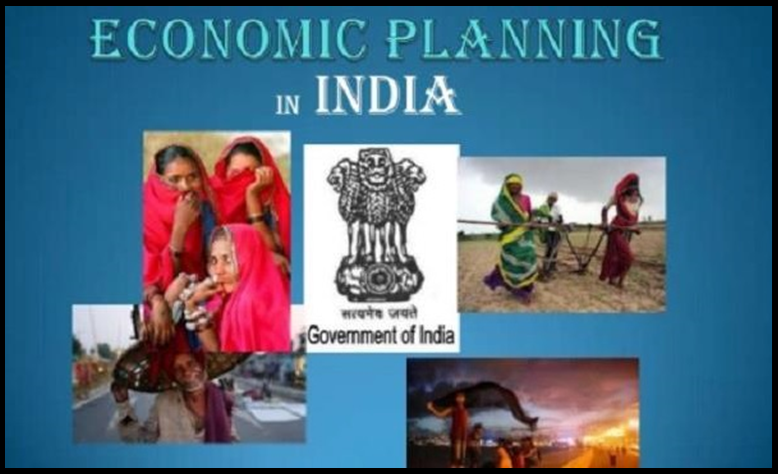A BLUEPRINT FOR INDIA’S SUSTAINABLE AND INCLUSIVE GROWTH BY 2047
Syllabus:
- GS-2- Trade and Commerce with countries, Autonomy and its impact on economy and society
- GS-3-Indian economy and planning
Focus :
- India’s path to becoming a developed economy by 2047 requires a sustainable and inclusive growth strategy. This involves boosting rural consumption, balancing fiscal prudence with growth-centric policies, investing in physical and digital infrastructure, and fostering innovation in sectors like agriculture, education, R&D, and manufacturing while addressing climate change challenges.
Source - TET
Introduction
- Current Growth: India is experiencing a GDP growth rate exceeding 7% for the third consecutive year.
- Challenges: Geopolitical tensions, climate change, and accelerated innovation necessitate a fresh approach.
- Long-Term Vision: The goal is to develop a sustainable and inclusive economy by 2047.
Boosting Rural Consumption
- Immediate Need: Enhancing rural consumption is crucial for short-term economic boosts.
- Balanced Fiscal Policy: Avoiding a disconnected fiscal policy that could lead to untenable debt levels.
- Conscious Infrastructure Development: Addressing both physical and digital infrastructure while considering societal needs and environmental challenges.
- Customized Strategy: Creating strategies tailored to India’s unique needs, balancing fiscal prudence and growth.
Investment in Agricultural Infrastructure
- Government’s Role: The government has led infrastructure development, showing potential for growth.
- Private Sector Involvement: Encouraging private sector participation through alternative partnership models.
- Agri-Infrastructure Development: Reducing wastage, improving farmer incomes, and contributing to food security and the rural economy.
- Gross Capital Formation: India’s gross capital formation-to-GDP ratio indicates clear potential for faster growth.
Innovative Funding Mechanisms
- Institutional and Retail Capital: Designing funding instruments to address funding gaps and drive growth.
- Successful Models: Instruments like InvITs and REITs have shown success internationally.
- Corporate Social Responsibility (CSR): Encouraging corporates to manage specific districts, improving access to credit, technology, and equipment.
- Inclusive Growth: Expanding rural incomes, creating jobs, and promoting inclusive economic growth.
Investment in Human Capital
- Demographic Dividend: Leveraging India’s demographic advantage requires focused investments.
- Industry-Relevant Learning: Upgrading the education system through practical, industry-relevant training.
- Collaboration: Government, industry, and educational institutions should collaborate to bridge skill gaps.
- Research and Innovation: Creating dedicated research institutes or innovation centers to foster upskilling and entrepreneurship.
Enhancing Research and Development (R&D)
- Public and Private Investment: Boosting R&D spending, especially in AI, biotech, and renewable energy.
- Industry Talent: Combining industry-ready talent with regulatory support.
- Innovation Hubs: Establishing plug-and-play research hubs to share resources and knowledge with MSMEs.
- Global Positioning: Positioning India as a leader in innovation, improving productivity, and creating new products and services.
Strengthening Manufacturing Capabilities
- Government Initiatives: Building on government efforts to support the manufacturing sector.
- Capital Attraction: Attracting both domestic and foreign capital to strengthen manufacturing.
- Global Supply Chains: Leveraging opportunities from global supply chain diversification.
- Industry-Specific Clusters: Investing in ancillary industries and creating regional clusters to build a robust manufacturing ecosystem.
Addressing Climate Change
- Inclusive Growth: Ensuring that growth initiatives are environmentally sustainable.
- Decarbonization Targets: Meeting global decarbonization targets to mitigate climate change impacts.
- Green Projects: Funding and supporting green projects and sustainability-focused innovations.
- Clean Technologies: Developing clean technologies, green materials, and carbon capture solutions.
- ESG Reporting: Implementing mandatory ESG reporting to ensure responsible practices across supply chains.
Conclusion
- Effort and Coordination: Achieving these goals will require concerted efforts and leveraging India’s full potential.
- Whole-of-Society Progress: Driving economic growth in a manner that benefits all sectors of society.
Source:The Economic Times
Mains Practice Question :
GS-2
“Discuss the key strategies that India should adopt to achieve sustainable and inclusive growth by 2047. How can the country balance fiscal prudence with growth-centric policies, and what role do investments in infrastructure, human capital, and climate resilience play in this vision?”(250 words)




